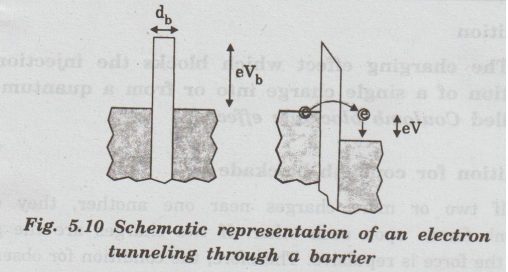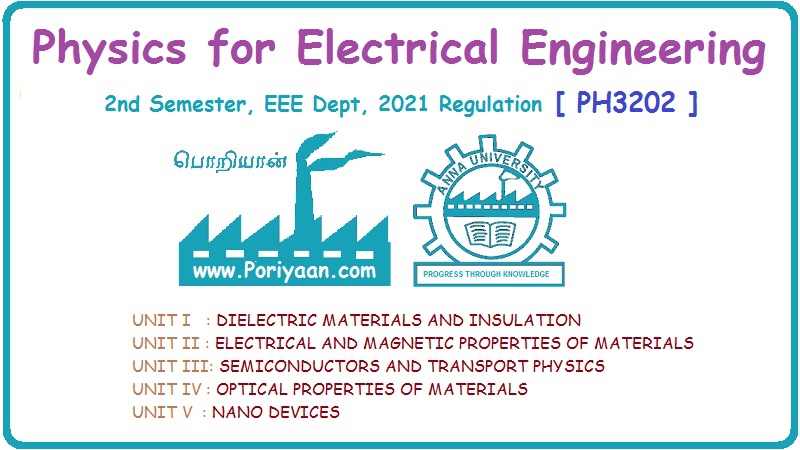Physics for Electrical Engineering: Unit V: Nano Devices
Single electron phenomena
Nano Devices
In electronics, transistor is the most important device. Transistors are what computers use to compute-tiny switches turning ON and OFF making logic decisions.
SINGLE ELECTRON PHENOMENA
In
electronics, transistor is the most important device. Transistors are what
computers use to compute-tiny switches turning ON and OFF making logic
decisions.
Todoub
Today, microchips have over a billion transistors, each one turning ON and OFF
a billion times every second.
These
chips require manufacturing processes with roughly sub 100-nanometer
resolution. Every year, this technology resolution drops enabling even smaller
transistors. Thus, more transistors are squeezed into the same amount of
semiconductor space.
Interestingly,
when each transistor is reducing to a few atoms, or a single molecule, quantum
effects will play a significant role.
In
1970, to switch ON a silicon transistor required about 10 million electrons.
Present day, transistors require closer to 10,000 electrons. Rather than moving
many electrons through transistors, it may very well be practical and necessary
to move electrons one at a time.
The
single electron devices are sensitive to the transfer of even single electron
change. Single electron devices provide a potential application of ultra large
scale integrated circuits with device size in the order of nanometres. They
exhibit high speed operation with lower power dissipation.
Coulomb
- Blockade effects
As
the size of the quantum dot decreases, the charging energy Wc of a
single excess charge on the dot increases.
If
the quantum-dot size is sufficiently small and the charging energy Wc
is much greater than thermal energy k T, there is no electron tunnels to and
from the quantum dot.
Thus,
the electron number in the dot takes a fixed value, say zero, when both the
electrodes are grounded.
Definition
The
charging effect which blocks the injection or rejection of a single charge into
or from a quantum dot is called Coulomb blockade effect.
Condition
for coulomb blockade
If
two or more charges near one another, they exert coulomb forces upon each
other. If two charges are the same kind, the force is repulsive. Therefore, the
condition for observing coulomb blockade effect is expressed as

where
C - capacitance of the quantum dot
T
- temperature of the system.
WC
- charging energy and this is the energy needed to add one negatively charged
electron to the dot.
Single
Electron Tunneling
Tunneling
is the way the electrons cross both the physical barriers and the energy
barriers separating a quantum dot from the bulk material that surrounds it.
If
any number of electrons on one side of the barrier could just tunnel across it,
there would not be any isolation.
So
it is necessary to control the addition and removal of electrons in a quantum
dot.
When
the size gets reduced, the capacitance also reduces to a small value.
At
small sizes, the energy required to store an additional
electron
on it, W = Q2 / 2C' may become larger than the thermal energy k T.

As
a consequence, the quantization of charge can dominate and tunneling of single
electrons across leaky capacitors carries the current. This is called single
electron tunneling (Fig. 5.10).
It
is used to design new types of devices, for example single-electron transistor
using quantum dots.
So
single-electron devices are are devices that can control the motion of even a
single electron and consist of quantum dots which have tunnel junctions.
Physics for Electrical Engineering: Unit V: Nano Devices : Tag: : Nano Devices - Single electron phenomena
Related Topics
Related Subjects
Physics for Electrical Engineering
PH3202 2nd Semester 2021 Regulation | 2nd Semester EEE Dept 2021 Regulation
